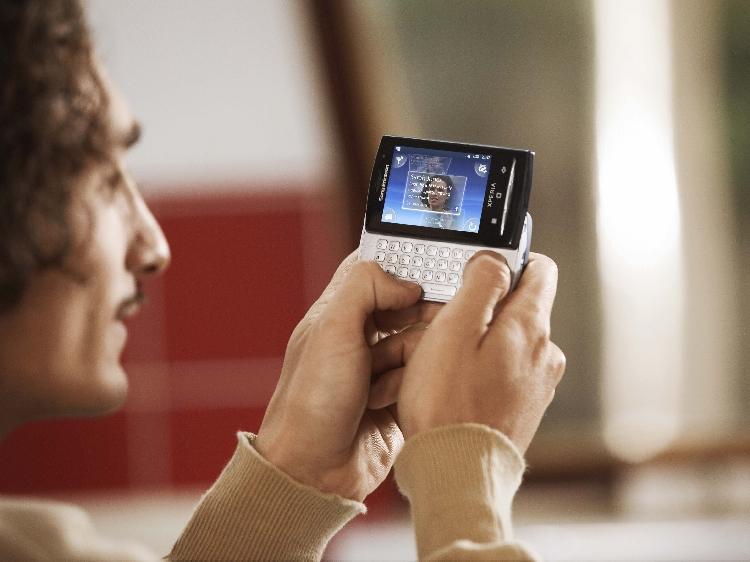Australian University Invents New Tech Helping People With Aphasia Write Their Stories
Scientists from Australia’s Monash University have worked out a new technology to help people with aphasia to communicate.Teaming up with Monash Health speech pathologists and their patients, students from the Monash Institute of Medical Engineering (MIME) and Monash Young Medtech Innovators (MYMI) have designed Project QWERTY, a free website that offers a high-tech but simple-to-use solution to aphasia. Aphasia is a neurological disorder and communication disability which can affect talking, understanding, reading, writing, and numeracy. It can be caused by stroke, brain tumour, or brain injury. Around 38 percent stroke survivors are impacted by aphasia. There are currently 140,000 Australians, and 180,000 Americans estimated to be living with this life-changing problem, which ranges from mild to severe. Most notably, Hollywood actor Bruce Willis recently announced that he was suffering from the disability. Project QWERTY combines tech skills, clinical expertise, and a lived experience of aphasia, allowing people with the disability to improve their written skills. In addition, it can be used on a tablet or desktop device for greater independence and access to rehabilitation. “This website allows people with aphasia to practice typing and spelling words that are meaningful to them, such as the names of friends and family or even their own personal details so they can independently fill out the paperwork when they go to an appointment,” speech pathologist Jenny Walsh, a co-creator of Project QWERTY said in a statement. Easy and Practical Aid Speech pathologist Grace Schofield, who also participated in the development of the project, said the website is easy to use and very practical. “Some people will use the website as a tool to ultimately enable them to return to work by targeting words that are unique to their workplace; others may use it to access an online newspaper or even footy scores,” said Schofield, who has recently used the project to help a patient practice words, enabling them to continue running their own business. “It’s all about giving people with aphasia independence to live their lives.” Project QWERTY was funded through the Healthcare Innovation Summer Scholarships (HISS) along with support from Monash Health and their volunteers. More information about aphasia can be found on the website of the Australian Aphasia Association.

Scientists from Australia’s Monash University have worked out a new technology to help people with aphasia to communicate.
Teaming up with Monash Health speech pathologists and their patients, students from the Monash Institute of Medical Engineering (MIME) and Monash Young Medtech Innovators (MYMI) have designed Project QWERTY, a free website that offers a high-tech but simple-to-use solution to aphasia.
Aphasia is a neurological disorder and communication disability which can affect talking, understanding, reading, writing, and numeracy. It can be caused by stroke, brain tumour, or brain injury.
Around 38 percent stroke survivors are impacted by aphasia. There are currently 140,000 Australians, and 180,000 Americans estimated to be living with this life-changing problem, which ranges from mild to severe. Most notably, Hollywood actor Bruce Willis recently announced that he was suffering from the disability.
Project QWERTY combines tech skills, clinical expertise, and a lived experience of aphasia, allowing people with the disability to improve their written skills. In addition, it can be used on a tablet or desktop device for greater independence and access to rehabilitation.
“This website allows people with aphasia to practice typing and spelling words that are meaningful to them, such as the names of friends and family or even their own personal details so they can independently fill out the paperwork when they go to an appointment,” speech pathologist Jenny Walsh, a co-creator of Project QWERTY said in a statement.
Easy and Practical Aid
Speech pathologist Grace Schofield, who also participated in the development of the project, said the website is easy to use and very practical.
“Some people will use the website as a tool to ultimately enable them to return to work by targeting words that are unique to their workplace; others may use it to access an online newspaper or even footy scores,” said Schofield, who has recently used the project to help a patient practice words, enabling them to continue running their own business.
“It’s all about giving people with aphasia independence to live their lives.”
Project QWERTY was funded through the Healthcare Innovation Summer Scholarships (HISS) along with support from Monash Health and their volunteers.
More information about aphasia can be found on the website of the Australian Aphasia Association.












